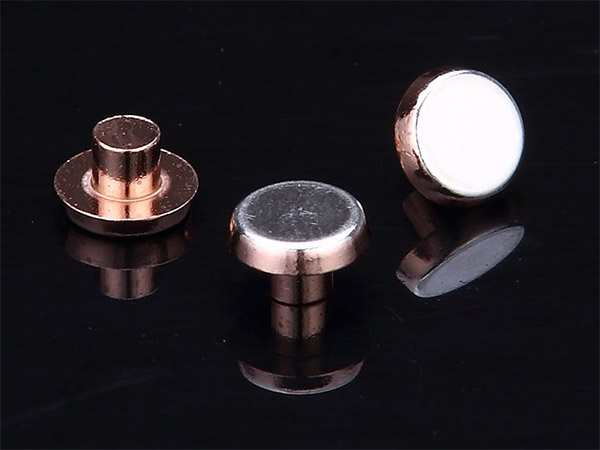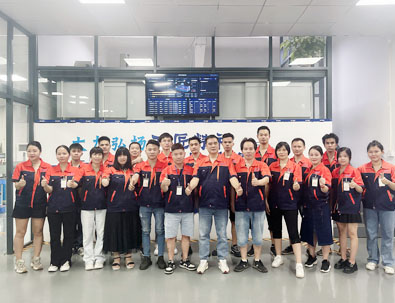Silver is the best conductor of electricity and heat of all metals and is therefore used in many electrical applications, especially in conductors, switch contactors, and fuses. Contactors provide a connection between two separable conductors so that current can flow through them, accounting for the largest proportion of electrical demand.
Silver contacts widely refers to the intersections of electrical and electronic appliances when they are disconnected and closed, separated and in contact with each other, because the metal conductor terminals are easy to produce instant heat and sparks at the moment of contact, prompting the contact point in the use of multi-frequency process, easy to produce oxidation and electrolysis, so the contact point is increased and thickened, or the use of polymer metal manufacturing (copper and silver two kinds As a result, the contact point made of polymer metal or the point thickened by the same material is called the silver contact.
Silver contacts with silver alloy main materials are as follows:
Sterling silver
is the content of nearly 100% metallic silver. However, because silver is an active metal, it is easy to chemically react with sulfur in the air to produce silver sulfide and make it black, so the "pure silver" in life generally refers to the content of 99.99% silver or 92.5% of 925 pure silver.
Silver cadmium oxide
Silver-based alloys containing cadmium oxide, silver and cadmium oxide are not miscible. There are AgCdO5, AgCdO8, AgCdO10 and AgCdO15. It has high conductivity, good resistance to electrical wear and fusion welding, low and stable contact resistance, and arc extinguishing effect. It can be made by powder metallurgy, internal oxidation or by oxidation-powder metallurgy to obtain alloys with fine and uniform microstructure of cadmium oxide. Used as medium and high power electrical contact material for magnetic starter, high power relay, ignition tube switch contact of electric welding machine, aviation electrical contact.
Silver nickel

Silver alloy made by adding nickel to silver. Adding a small amount of nickel can refine the grain, improve the hardness, wear resistance and burn resistance of silver, and slightly increase the contact resistance. Since silver and nickel are not miscible, they are prepared by powder metallurgy, and the nickel content is generally 5% to 40%. Silver nickel alloy electrical contact material has good electrical and thermal conductivity, resistance to metal transfer, arc burning, electrical erosion and other capabilities, good wear resistance, high strength, and good ductility and cutting ability, contact resistance is higher than silver, silver nickel alloy physical properties are shown in the table. In the past, the mixed powder of silver and nickel was obtained by chemical codeposition method, and then the coated powder of silver and nickel was obtained by chemical method. The general process of chemical pulverization is more complex, the cost is high, with the development of pulverization technology, in recent years, most of the mechanical atomization method to produce extremely fine powder, then mixing, pressing, sintering, extrusion, to produce the same reliable performance of silver nickel alloy. Recently, silver and nickel co-spraying powder and mechanical alloying technology have been developed, and the materials produced have better properties. A small amount of rare earth elements can be added to silver nickel alloy to improve its properties. Silver - nickel alloys are used in low-voltage electrical appliances. AgNi10 is mostly used for AC contactors below 20A; AgNi(15 ~ 40) can withstand higher loads. Silver nickel alloy as a contact material is widely used in all kinds of switches, controllers, voltage regulators, circuit breakers, automotive electrical appliances, magnetic starters and so on.
Silver tin oxide
AgSnO2 contact material is environmentally friendly and non-toxic, with excellent welding resistance and arc ablation resistance. Generally speaking, AgSnO2 has better resistance to arc erosion than AgCdO under the condition of higher current. AgSnO2 showed stronger current shock resistance than AgCdO and AgNi under lamp or capacitive load. The contact resistance of AgSnO2 is slightly higher than that of AgCdO under AC resistance load, but it shows low and stable contact resistance under DC lamp or motor load. The material transfer performance of AgSnO2 is better than that of AgCdO under DC condition. AgSnO2 contact materials are widely used in large and medium capacity contactors, power relays, small and medium capacity low-voltage circuit breakers and automotive electrical appliances.






